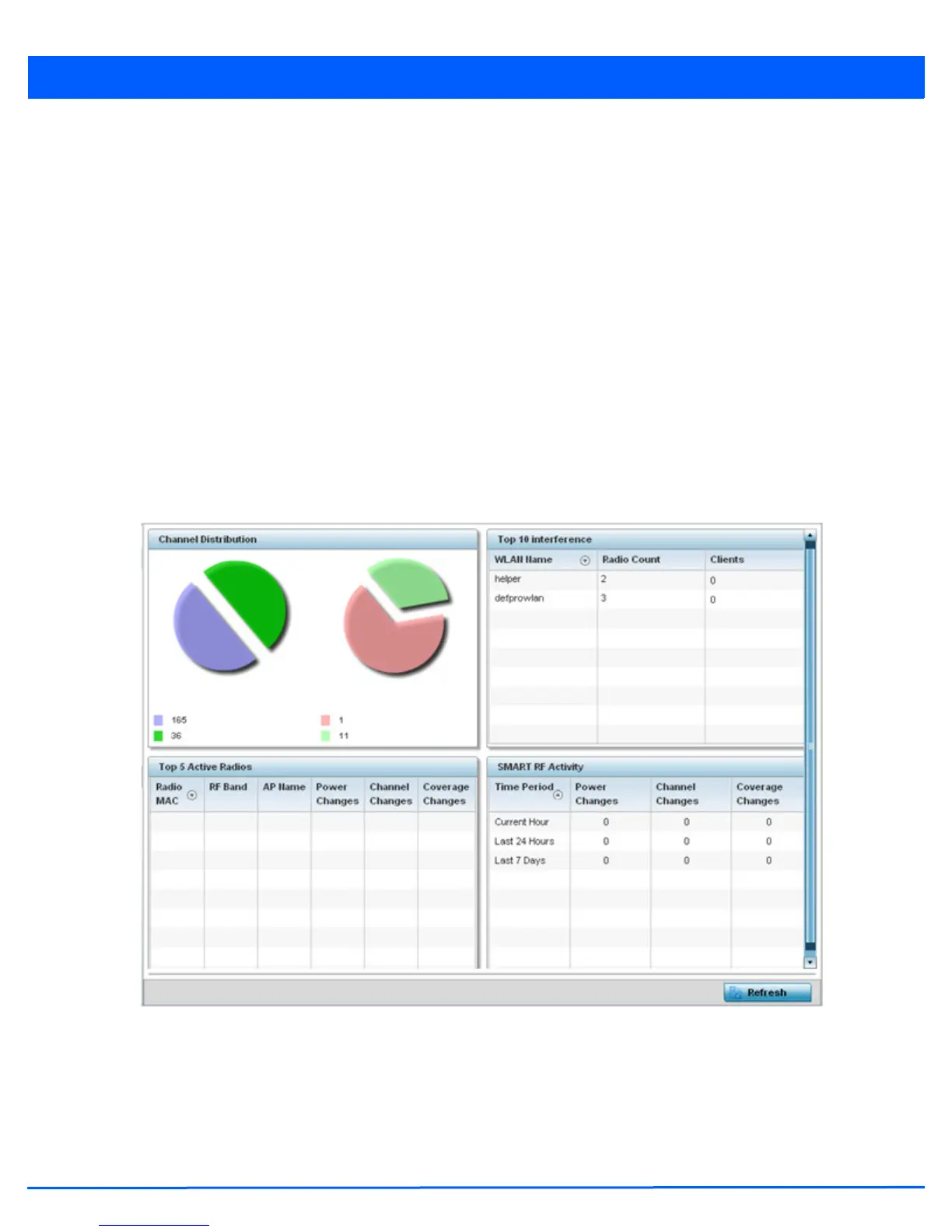Statistics 13 - 45
13.2.11 SMART RF
RF Domain Statistics
When invoked by an administrator, Self-Monitoring At Run Time (Smart RF) instructs access point radios to change to a specific
channel and begin beaconing using the maximum available transmit power. Within a well-planned deployment, any RF Domain
member access point radio should be reachable by at least one other radio. Smart RF records signals received from its
neighbors as well as signals from external, un-managed radios. AP-to-AP distance is recorded in terms of signal attenuation.
The information from external radios is used during channel assignment to minimize interference.
To view the Smart RF summary for RF Domain member access point radios:
1. Select the Statistics menu from the Web UI.
2. Select a RF Domain from under the System node on the top, left-hand side, of the screen.
3. Select SMART RF from the RF Domain menu.
4. Expand the SMART RF menu and select Summary.
The summary screen enables administrators to assess the efficiency of RF Domain member device channel distributions,
sources of interference potentially requiring Smart RF adjustments, top performing RF Domain member device radios and
the number of power, channel and coverage changes required as part of a Smart RF performance compensation activity.
Figure 13-24 RF Domain - Smart RF Summary screen
5. The Channel Distribution table lists how RF Domain member devices are utilizing different channels to optimally support
connect devices and avoid congestion and interference with neighboring devices. Assess whether the channel spectrum is
being effectively utilized and whether channel changes are warranted to improve RF Domain member device performance.

